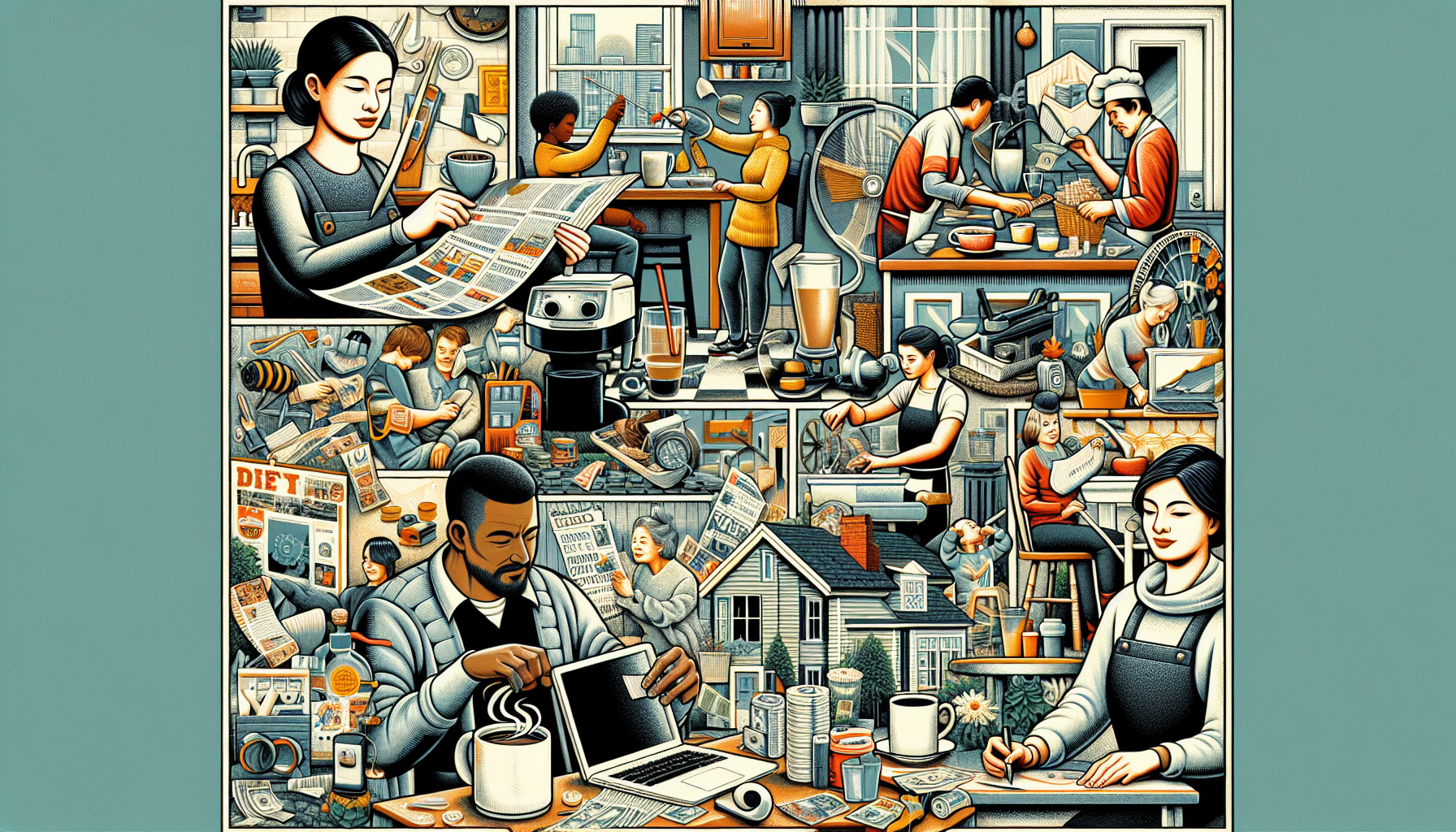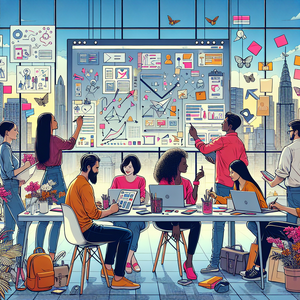Breaking Into UX Design Without Experience

User Experience (UX) design focuses on the interaction between users and products, aiming to improve usability, accessibility, and pleasure in the interaction. It's a blend of psychology, design, and technology, making it a diverse field that welcomes individuals from various backgrounds. For those without formal experience, understanding the core principles of UX design—such as user-centered design, usability testing, and design thinking—is the first step toward breaking into the industry.
Leveraging Transferable Skills
Many skills acquired in previous jobs or life experiences can be invaluable in the realm of UX design. Consider the following: 1. **Communication Skills**: If you have experience in customer service, sales, or teaching, you likely possess strong communication skills. These are crucial in UX design, where understanding user needs and collaborating with teams is essential. For example, a former teacher may excel at conducting user interviews and synthesizing feedback. 2. **Problem-Solving Abilities**: Any experience in project management or troubleshooting can translate well into UX design. The ability to identify problems and devise creative solutions is a key part of the design process. A project manager, for instance, knows how to navigate challenges, prioritize tasks, and deliver results—all essential in UX projects. 3. **Empathy**: If you've worked in roles that required understanding diverse perspectives, you already have a core UX principle down—empathy. This skill is vital for designing user-centered products. An individual with a background in social work may have honed their empathetic listening skills, which can be directly applied to user research.
Exploring Online Courses
The digital age has made education more accessible than ever. Numerous online platforms offer courses tailored for aspiring UX designers. Websites like Coursera, Udemy, and LinkedIn Learning provide resources ranging from foundational principles to advanced techniques. Here’s how you can make the most of these offerings: 1. **Choose Your Learning Path**: Identify which aspect of UX design interests you most—research, interaction design, or usability testing—and select courses accordingly. For instance, if you are intrigued by user research, seek out courses that emphasize that area. 2. **Hands-On Projects**: Many online courses incorporate practical projects, allowing you to apply what you’ve learned. Completing these projects not only reinforces your understanding but also provides content for your portfolio. For example, creating a user persona as part of a course can give you hands-on experience that is highly relevant to real-world projects. 3. **Certifications**: Some platforms offer certificates upon completion, adding credibility to your resume. While not a substitute for experience, they can demonstrate your commitment to learning. A certification from a recognized platform can help you stand out in a competitive job market.
Creating Personal Projects
One of the most effective ways to build experience is through personal projects. Here’s how to get started: 1. **Identify Real-World Problems**: Look around your community or daily life for issues that could be solved through better design. It could be anything from a local service that could benefit from an app to an existing website that lacks user-friendliness. 2. **Design a Solution**: Use design thinking methodologies to brainstorm and create a solution. Sketch wireframes, create prototypes, or even conduct user testing with friends or family to gather feedback. For instance, redesigning a local café's website to enhance user experience could serve as a strong project. 3. **Document Your Process**: As you work through your project, keep detailed notes on your design decisions, the challenges you faced, and how you addressed them. This documentation will be invaluable when presenting your work to potential employers. A well-documented project showcases your thought process and problem-solving skills.
Networking and Community Engagement
While building skills and a portfolio is crucial, connecting with others in the field can significantly enhance your job prospects. Here are a few strategies: 1. **Join Online Communities**: Platforms like Reddit, UX Design forums, and LinkedIn groups can provide support and resources. Engaging in discussions and sharing your work can help you gain visibility. Participating in community challenges can also enhance your skills. 2. **Attend Meetups and Workshops**: Look for local UX meetups or online workshops. These events are great for networking and learning from experienced professionals. Many UX designers share their experiences, offering insights that can guide your journey. 3. **Seek Mentorship**: Don't hesitate to reach out to seasoned designers for guidance. Many are willing to share their knowledge and may even refer you to job openings. A mentor can provide critical feedback on your portfolio and help you navigate your career path.
Breaking into UX design without experience may seem challenging, but it is entirely achievable with the right approach. By leveraging transferable skills, engaging in online learning, creating personal projects, and building a network, you can carve a niche for yourself in this exciting field. The journey may require persistence and creativity, but the rewards of a fulfilling career in UX design are well worth the effort. Embrace the unconventional routes, and you may just find the path to your dream job.
UX Researcher
Google, Amazon, Adobe
Core Responsibilities
Conduct user interviews and surveys to gather insights about user needs and behaviors.
Analyze qualitative and quantitative data to identify patterns and inform design decisions.
Collaborate closely with designers and product teams to iterate on design concepts based on user feedback.
Required Skills
Strong analytical skills with experience in methods like usability testing and A/B testing.
Proficiency in tools such as UserTesting, Optimal Workshop, or similar platforms.
Excellent communication skills to present findings and advocate for user-centered design.
Interaction Designer
Microsoft, IBM, Airbnb
Core Responsibilities
Create wireframes, prototypes, and high-fidelity mockups to visualize user interactions.
Develop user flows that outline how users navigate through applications and websites.
Collaborate with UI designers to ensure a seamless integration of visual design and interaction principles.
Required Skills
Proficiency in design tools like Sketch, Figma, or Adobe XD.
Understanding of front-end development basics, including HTML, CSS, and JavaScript.
Strong problem-solving skills to optimize user interactions based on usability principles.
UX/UI Designer
Facebook, Spotify, Shopify
Core Responsibilities
Design intuitive and engaging user interfaces for web and mobile applications.
Conduct competitive analysis and user testing to refine design concepts.
Work closely with developers to ensure designs are implemented accurately and efficiently.
Required Skills
Proficiency in design software such as Adobe Creative Suite, Figma, or InVision.
A strong portfolio showcasing a blend of UX research and UI design work.
Familiarity with responsive design principles and accessibility standards.
Usability Analyst
Nielsen Norman Group, Intuit, Salesforce
Core Responsibilities
Evaluate existing products for usability issues through testing and user feedback.
Develop reports and presentations to communicate usability findings and recommendations to stakeholders.
Collaborate with design and development teams to implement usability improvements.
Required Skills
Experience in usability testing methodologies and tools, such as Lookback or UsabilityHub.
Ability to synthesize complex data into actionable insights.
Strong attention to detail and a user-centered mindset.
Product Designer
Slack, Stripe, Dropbox
Core Responsibilities
Oversee the entire design process, from user research to final implementation, ensuring a cohesive product experience.
Facilitate brainstorming sessions and design critiques with cross-functional teams.
Create and maintain design systems to ensure consistency across products.
Required Skills
Proficiency in both UX and UI design principles, with a solid foundation in user-centered design.
Experience with tools like Zeplin or Abstract for collaboration with developers.
Strong project management skills to oversee timelines and deliverables.


